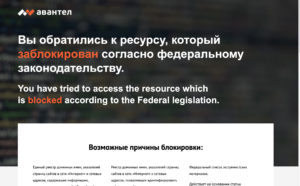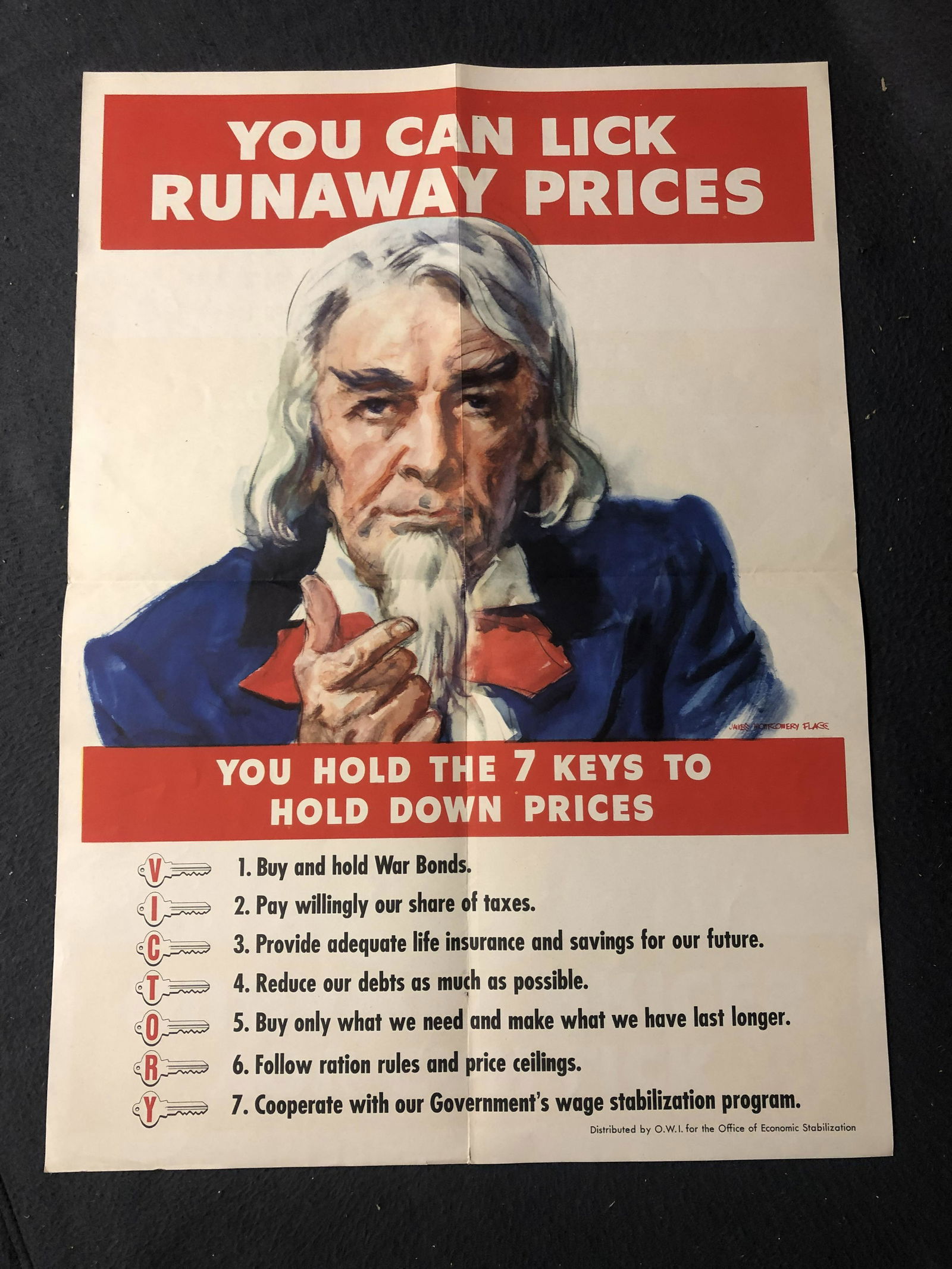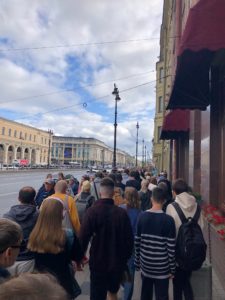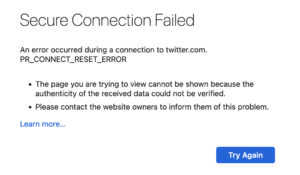Former President Donald Trump’s Florida home raided by the FBI as he prepares to be deposed by the New York attorney general’s office. Will Trump be able to survive, or even thrive, as a result of overreach that feeds into his supporters’ sense of eternal grievance? Cartoonists Ted Rall and Scott Stantis discuss the political ramifications. Ted downloads about his second week in Russia and how it bore zero resemblance to the picture of doom and gloom depicted by Western news media. Democrats got stuff done, finally. Does it matter? If so, how much?
In Actual Russia, No Sign of Sanctions
It’s time to get real. It’s been time to get real. Russia has won its war against Ukraine.
This outcome comes as no surprise. Anyone with access to a map could see that the chances of Ukraine prevailing against Russia were slim to none.
The only way Ukraine could have emerged victorious—which would, according to the Ukrainians themselves, mean pushing it out of Crimea and deposing the separatist pro-Russian republics of Donetsk and Luhansk—would have been if the United States and its Western allies had been willing to launch nuclear weapons, which would have led to global annihilation. Once the decision was made not to start World War III, Ukraine’s defeat became inevitable. This, everyone sane knows, is for the best.
Determinative to this conclusion was an unusual pair of motivations. Normally, when a war is fought on one country’s territory, the invaded country fights harder than the invading forces. Paradoxically, despite suffering damaged infrastructure, the invaded state enjoys the homefield advantages of complete knowledge of the battlefield and much shorter supply lines. Aside from sporadic cross-border missile strikes, this war has been fought entirely on Ukrainian territory.
This conflict is different because Russia has to win; it cannot walk away. Ukraine has a 1,200-mile border with Russia, it wants to join an anti-Russia military alliance and its government was openly hostile to Russia before the war. And when Germany invaded the Soviet Union in 1941, its armies came through Ukraine, where the Nazis were greeted as liberators. Unlike America, which could bring its troops home after losing on the other side of the world in Afghanistan and Iraq and shrug off its imperialist misadventures and could leave Vietnam after pretending that more political will on the home front would have resulted in victory, Russia sees its military operation as existential. Ukraine isn’t a misbegotten side project. It’s as essential in the same way the United States would respond to a Canada that turned hostile to the U.S.
Unfortunately and dangerously, American media consumers are being pounded with an endless deluge of propaganda promoting the ludicrous idea that Ukraine is winning and/or will ultimately prevail militarily. This fantastical assertion props up political support for shipping $60 billion worth of weapons to Ukraine, with more on the way—never mind the 70% that Zelensky’s wildly corrupt government sells on the black market and the Javelin missile systems that wind up for sale on the dark web. (Christmas is coming! Don’t forget your favorite political cartoonist and columnist.) By way of comparison, the U.S. Department of Health and Human Services estimates that we could abolish homelessness here for $20 billion.
We’re also being told that Russia is crumbling under the crushing blow of vicious Western sanctions deployed as part of the White House’s openly-stated war aim that it wants “to see Russia weakened.” The Russian economy, it is said, is collapsing. Russian elites, they say, will soon overthrow President Vladimir Putin.
Let me tell you firsthand: there is zero sign of economic distress in Russia.
I’ve spent the last two weeks in Moscow and Saint Petersburg, Russia’s two biggest cities. Stores are bustling, people are spending, unemployment is low and still falling, there are lines at ATMs and whatever else is happening, the economy is anything but bad. The Galeria Mall across the busy street from my hotel in Saint Petersburg has a few closed stores shut down by Western chains but the majority remain and consumers are shopping like mad. European and American tourists are few and far between, but it’s exactly the same here in sanctions-free Istanbul where I’m writing this. Westerners stopped coming at the start of the COVID-19 lockdown two years ago and still haven’t returned. If Russians are unhappy with Putin—and they’re not—it’s not because of the economy.
I know from bad economies; where I live in New York, crime is out of control, homeless people go untreated for an array of mental illnesses and some are killing people, and being killed, and many storefronts have been empty and boarded up since the beginning of the pandemic. Any New Yorker would or should happily trade places with their Muscovite counterpart, who lives in a city with clean streets and subways that don’t serve as rolling homeless shelters and where life feels as if COVID-19 was never a thing. News stories that claim Russia is on the ropes are a giant magnificent pile of lies so over-the-top that I can’t help but be impressed by their glorious audacity and easily-debunked mendacity. All you have to do is go to Russia, as I did, and see for yourself that it’s all bull—but hey, that’s a lot of trouble—because of sanctions that seem to be hurting us more than them.
Self-delusion is more fun. Who, after all, should you trust? The same U.S. state media that told you Saddam had WMDs? Or some cartoonist-columnist who told you, well in advance, that the U.S. didn’t stand a chance in Afghanistan, Trump would win in 2016 and that he would attempt a coup d’état to remain in power?
(Ted Rall (Twitter: @tedrall), the political cartoonist, columnist and graphic novelist, co-hosts the left-vs-right DMZ America podcast with fellow cartoonist Scott Stantis. You can support Ted’s hard-hitting political cartoons and columns and see his work first by sponsoring his work on Patreon.)
DMZ America Podcast #60: Pelosi goes to Taiwan, Midterms, U.S.-led Assassinations, Monkey Pox and Ted Reports from Russia
This exclusive episode finds award-winning cartoonist Ted Rall Zooming in a report from St. Petersburg, Russia. He and Scott Stantis (not in Russia) discuss Speaker Nancy Pelosi’s historic trip to Taiwan. Which leads the lads to talk about the assassination of Al Qaeda leader Ayman al-Zawahiri. Scott and Ted also discuss Monkey Pox and, last, Ted delivers a boots-on-the-ground report about life inside the Russian Federation under Western sanctions. Spoiler: it’s nothing like you think.
Greetings from Russia
 I’m interested in stories that go uncovered and undercovered. Fewer stories are less obscured today than life in Russia under Western sanctions. I’m especially interested in stories that are so imbued with spin and propaganda that the news media has abandoned all pretense of objectivity. That’s certainly true about the Russia-Ukraine conflict.
I’m interested in stories that go uncovered and undercovered. Fewer stories are less obscured today than life in Russia under Western sanctions. I’m especially interested in stories that are so imbued with spin and propaganda that the news media has abandoned all pretense of objectivity. That’s certainly true about the Russia-Ukraine conflict.
I spent last week in Moscow to check things out for myself. Now I’m in Saint Petersburg. If you’ve never been to Russia, Moscow feels a bit like D.C.—streets and plazas on a scale hostile to pedestrians, impressive metro, intimidating government buildings raised by and for the political class. Saint Petersburg is more like New York, the country’s intellectual capital, steeped in history, sophisticated and hip rather than utilitarian and brutalist.
Friends worried about my safety. Their concerns could not possibly have been more misplaced.
Some worried that I’d be detained like the WNBA player Brittney Griner, who got caught at a Moscow airport with vape cartridges containing cannabis residue yet is being portrayed as a political hostage of Vladimir Putin. I wish Griner the best and hope she doesn’t go to prison, but I don’t understand the assumption of Americans that they don’t have to obey the law when they visit a foreign country. Foreign prisons are full of Americans convicted on drug charges; American prisons host many foreign nationals. If you can’t conform to local legal norms, stay home.
I don’t vape or use cannabis so no worries there.
But I was pulled out of the passport line upon arrival and pulled into a side office. A young man I think was an FSB officer questioned me about my occupation, education, travel itinerary, politics and my opinions about Russia’s actions in Ukraine. Unlike other Western travelers from “unfriendly” countries who report having been held for hours, the officer didn’t ask to look at my phone and sent me on my way after about 20 minutes. I assume that my experience was eased by the fact that one of my cartoon clients is Sputnik News.
I’ve been through this sort of thing before. No matter the country or its culture, intelligence agents assigned to border security are cut from the same cloth everywhere you go: young, intelligent, big smiles and a certain sinister charm. The Mossad grilled me for hours at Tel Aviv airport. Same treatment by an Iranian intel dude after entering overland from Afghanistan. Don’t lie to these guys. They’ll know.
Yes, it’s legal to travel to Russia. You can still get a visa. You can still fly in, albeit not over Europe. I flew on a packed plane to Istanbul and connected to a Moscow-bound flight that detoured an extra hour or two by going around and to the west of Ukraine.
The Russian economy, Americans have been told, is a wreck. If so, it’s the biggest secret in Russia. Storefronts are occupied, bustling with shoppers like it’s the week before Christmas. Gas prices are a reasonable $3 a gallon. Highways and city streets are choking with car traffic and pedestrians. Restaurants and bars are doing brisk business. New buildings are going up. Nowhere in the nation’s two most important cities does one find deranged armies of homeless people screaming at thin air and threatening people, streets blanketed with litter and shattered and boarded-up storefronts, as are blighting New York. There was an hour-long line—on a Tuesday—to enter the Hermitage Museum in Saint Petersburg.
To be sure, sanctions are affecting the tourism business. Hotel prices have fallen as a result. Restaurants in tourist areas have been impacted as well. Westerners stopped coming when COVID began two years ago; this feels like an extension of that. So it’s not a shock.
Some Western businesses, like McDonald’s and Starbucks, have closed. Who cares, except the Russian workers who got laid off? Burger King is everywhere. As in Rome or Paris, you can score a much better cup of joe at a zillion cafes.
Nothing has made as big an impression on businesses in Russia as Visa and Mastercard’s decision to stop honoring American- and European-issued debit and credit cards in Russia. Russian nationals can use their MIR debit and credit cards here, but not in the West. When Westerners come to Russia, we have to bring a stack of cash to pay for everything, including hotels. There is a sort of workaround; I have an account at one of the major U.S. banks that still has branches here and so have been able to withdraw cash via ATM. Suze Orman would love the inability to go on a credit-card bender.
Signs of war are few and far between: the “Z” logo on some metro posters, the occasional motorist with a patriotic flag on their car, sailors in port for Navy Day.
Needless to say, the sanctions don’t affect Russian political or financial elites. All Biden and the EU are doing is making it harder for Americans and Europeans to visit Russia. This means we have no cultural impact whatsoever, no political influence. As we’ve been doing in Cuba and Iran for decades, we’re cutting off our noses to spite our faces.
Google, or Google News at least, is supposedly blocked in Russia. Not true.
Twitter, Facebook and Instagram, all officially blocked by the Russian government, actually come and go in some mysterious, haphazard way.
My email is blocked.
Russia allows a lot of Western media outlets, including those highly critical of Russia and its war in Ukraine, to broadcast inside the country. I watched pro-Ukraine, anti-Russian stories here on CNN International, CNBC and the BBC. Western news apps like the New York Times, Washington Post, The Guardian and the Associated Press work without a hitch. However, and oddly, my syndicate’s cartoon website GoComics is inaccessible in Russia.
In the United States, on the other hand, the powers-that-be are blocking apps of the TV and radio broadcasters RT and Sputnik News, as well as their text journalism content. Both networks are banned in the EU. By this metric, Russia’s news media is freer than ours.
Many of my friends worried that Russians would respond with rage and violence when they learned I was from the United States. I know from my travels that Americans’ inability to separate people from the politics of their country’s government is fairly unique and so shrugged them off.
But Russians’ reactions have surprised me. Outwardly glum and cold until they get to know you, they warm up with big bright smiles and express happy surprise that anyone from the United States still takes interest in Russia. Drinks are comped, good vibes all around.
(Ted Rall (Twitter: @tedrall), the political cartoonist, columnist and graphic novelist, co-hosts the left-vs-right DMZ America podcast with fellow cartoonist Scott Stantis. You can support Ted’s hard-hitting political cartoons and columns and see his work first by sponsoring his work on Patreon.)
DMZ America Podcast #59 | July 29, 2022: Ted Calls in from Moscow; Paul Pringle and Other Self-Serving Figures at the LA Times
In this week’s DMZ America Podcast, cartoonist Ted Rall calls in on a shaky line from Russia. Listen to this first-hand account of how US sanctions are (not) affecting Moscow and how things look and feel in the Russian capital. LA Times investigative reporter Paul Pringle, in the news over his controversial book (“Bad City”) calling out corruption at the Times and in LA in general, and attacking his own newspaper over a USC scandal, played a key role—perhaps largely forgotten—in the LA Times’ infamous decision to fire and smear Ted as a favor to the LAPD. Scott and Ted recall how things went down in 2015 and analyze how few people at the LA Times have much to be proud of.
What Are Awards For?
 What are awards for? More precisely, what should they be for?
What are awards for? More precisely, what should they be for?
John McWhorter recently argued in The New York Times in favor of a retroactive Pulitzer Prize for Duke Ellington, who was snubbed for the journalism and arts award in 1965. My encyclopedic ignorance about jazz entitles me to have no opinion whatsoever about this attempt at raising an issue.
One sentence in McWhorter’s essay, however, deserves special attention: “We assume that Pulitzers are awarded to work that qualifies as for the ages, that pushes the envelope, that suggests not just cleverness but genius.”
Do we really assume that?
Should we?
When the Pulitzer board or governing body of other major prizes like the Oscars, Emmys, Tonys and so on decides upon the recipient of an award, what message is it trying to send?
I agree with McWhorter. An award for best whatever of the year should first and foremost go to the best work in that category. A close-second consideration — my opinion, obviously — should favor work that is transformative, original, different. Judging by lists of previous prize winners, however, some people disagree…particularly those who decide the winners of these contests.
While the media obsesses over awards and prizes handed out to its fellow elites, such competitions are part of life across every social strata, from elementary-school best-citizen awards to 4-H contests to merit badges to best employee of the month at a fast-food joint to your boss’ annual review. They determine whether or not you get a raise, sometimes whether you keep your job or get laid off, and even whether people are shocked or just shrug their shoulders after you kill yourself. Awards and prizes are key components of human motivation under capitalism, of which angling for higher relative social status is a primary driver, perhaps the top one.
Like most of my fellow scribblers, I have spent too much of my time and energy handicapping — always unsuccessfully — award decisions for two simple reasons. First, winning one can really help your career. When I started out newspapers were reluctant to pick up my cartoons, which were drawn in a brutalist style at odds with the prevailing, crosshatched norm and ideologically far to the left of my colleagues. The establishment imprimatur of the 1995 RFK Journalism Award made enough editors feel safe to run my work that I was able to quit my day job. Second, we look to award announcements for indications of the kind of work that the powers that be are looking for from us. Conservative cartoonists, passed over in favor of liberals year after year, not unreasonably believe their work is neither valued nor wanted.
As a judge on several award committees (not the Pulitzers) I have participated in numerous discussions about what criteria should be applied to assess the worthiness of prize applicants. I have also raptly absorbed countless secondhand accounts of the proceedings inside the hallowed halls of the Journalism Building at Columbia University, where the Pulitzers are administered.
(Earlier this year, Columbia eliminated the Pulitzer for editorial cartooning, merging it with a category so broad that the possibility that a political cartoonist could win has been reduced so radically that there’s no longer a point to entering.)
My experiences as a judge convinced me that the all-too-human members of prize committees are incapable of rendering anything approximating a reasonable decision. Very few judges have the comprehensive knowledge of the field they are judging necessary to do the job. Almost none have any historical background that informs the relevance of what they are looking at. Most elevate superficial factors — it made me laugh, the art is pretty — over more serious concerns like: does it make you think? Does it make you think differently? Does it take the form in a new, exciting, better direction? Does this award encourage smarter work, or — as is too often the case — discourage it?
Seymour Topping, late administrator of the Pulitzer Prizes, vetoed my elevation from finalist to winner on the grounds that “[Rall] doesn’t draw like the other editorial cartoonists.” The same year, one of the RFK judges told me I won because my drawing style was different. Both decisions were dumb.
So what are awards for? Mainly, they’re for reinforcing the status quo. For example, the common practice of having previous winners of a contest judge it ensures stylistic continuity.
Awards are a stupid idea poorly executed. People win prizes to make up for having been passed up in earlier years even though other, younger creators are now better than them. Corruption is rampant. Committees don’t bother to look at some entries. Committee members direct other members to vote for their friends and drinking buddies. Sometimes there is horse-trading in order to evenly distribute prizes to winners affiliated with different employers. Even worse than corruption is the utter lack of qualifications of those making the decisions; among the decisionmakers for the cartoon Pulitzer have been a freelance technology writer and editors for newspapers that don’t run any cartoons.
Although I have won awards and still apply — you have to play the game — I would abolish them. Unlike sports like track and basketball, where the metrics are straightforward — you either cross the finish line first or the ball goes through the hoop, or not — journalism and the arts are subjective. I may disagree with the Motion Picture Academy’s choice of the now-forgotten “Ed Wood” over Tarantino’s Gen X masterpiece Pulp Fiction” and giving a Grammy to Milli Vanilli over fellow nominees Tone Lōc and the Indigo Girls. But it’s a fair bet that the voters who made those calls assess film and music, and who should win awards for it, via different metrics than I do. Even if it were possible to objectively determine what is “best,” elevating one person at the expense of an entire field is toxic and discouraging.
But contests aren’t going anywhere. So we should try to agree on what it means when someone or something is declared the best of its kind.
(Ted Rall (Twitter: @tedrall), the political cartoonist, columnist and graphic novelist, co-hosts the left-vs-right DMZ America podcast with fellow cartoonist Scott Stantis. You can support Ted’s hard-hitting political cartoons and columns and see his work first by sponsoring his work on Patreon.)
Russia!
I’m going to Russia!
Needless to say, I’m excited to be (a) traveling overseas, (b) going somewhere interesting and beautiful with cool people and (c) getting to check out a place that has been submerged into a US newsmedia black-out zone due to the pullout of most MSM news outlets.
Logistics:
Yes, it’s legal for a US citizen to travel to Russia.
No, Russians won’t be mean to me due to me being American. We do that kind of thing. People in other countries do not.
Yes, I have a visa.
No, I don’t use cannabis. Nor do I vape.
It’s unclear to what extent sanctions will be a pain in my ass. Will my US smartphone work? I’m thinking probably yes. Will my US debt/credit cards? 50-50; the Internet is unclear on this point.
You can’t fly over the EU. So I’m flying around the EU. Well, the pilot will.
I’ve been before, but it’s been years.
I’ll be doing a lot of tourist stuff.
If there’s anything you’re curious about, feel free to post in the comments section.
DMZ America Podcast #58: With special guest, Editorial Cartoonist Mike Thompson! Workplace Bullying, the VERY Shallow Democratic Bench for 2024 and Hunter Biden
Ted and Scott welcome their colleague Editorial Cartoonist Mike Thompson (ex-USA Today, Detroit News) to the podcast as a guest. Mike has written a cool graphic-journalism piece on workplace bullying and its role in the Great Resignation. We go on to handicap the candidates for the 2024 Democratic presidential nomination. (Spoiler alert: It’s bleak.) Finally, we go into the sordid story of Hunter Biden. Should we care that the Mainstream Media doesn’t give a rip about this growing scandal?
What’s Worse Than Inflation? Fighting Inflation.

Inflation is a cancer. It eats away at savings and consumer confidence. But the tools the United States government uses to fight inflation are often worse—they’re a form of chemotherapy that’s even more likely to kill the economy than the underlying disease. When your car is careening down a hill, slamming on the brakes is an inexperienced driver’s first instinct. But it’s the last thing you should do. Unfortunately, the history of inflation-fighting indicates that monetary policymakers seem to prefer crashes to soft landings.
Fueled in large part by massive deficit spending as the Pentagon tried to bomb its way to victory in the unwinnable Vietnam war, inflation ran rampant from the latter part of the presidency of Richard Nixon through that of his successor Gerald Ford, and infamously contributed to the destruction of Jimmy Carter’s reelection chances.
Inflation encourages consumer spending because, if you put off a purchase, it will cost more later. Enter Paul Volcker, appointed to the chairmanship of the Federal Reserve Bank in 1979. Determined to radically reduce spending and wages, he applied the anti-stimulus of sky-high Fed interest rates that peaked out at nearly 20% in 1981, Reagan’s first year in office. The result was two back-to-back recessions, which saw unemployment soar even higher than during the Great Recession of 2008-11.
Inflation was dead for the foreseeable future. With the benefit of hindsight, however, the cost of taming inflation was too damn high.
Reagan’s supply-side policies, which centered around tax cuts for large corporations and wealthy individuals coupled with austerity for everyone else, combined with Volcker’s hard line on inflation to create an anemic mid-1980s recovery before the 1987 stock market crash marked the start of yet another Republican bust.
It is, of course, impossible to brush away the cynical conclusion that crushing workers and their economic power was and remains a feature of the capitalist system and its stewards in government and finance. Reagan and his merciless smashing of the air traffic controllers union—leading to years of union-busting—coincided neatly with those 30+ years of non-existent raises, as well as private-sector union membership falling off a cliff. Throughout the 1950s, 1960s and 1970s, there were between 200 and 400 major strikes by labor unions each year. When Reagan left office in 1988, there were 40. There were just seven in 2017.
Unsurprisingly, taking away power from workers and giving it to bosses made things worse for workers. The Reagan years radically widened the income gap between low- and high-income earners for the following three decades—even though the average American worker was increasingly efficient and productive year after year. Between 1979 and 2019, productivity increased 60% while wages only went up 16%. Windfall profits went to shareholders and owners.
Ironically, wage stagnation came to its merciful, all-too-brief conclusion in 2020, when people weren’t working at all. Between March and June of that year, when many furloughed workers were sitting at home during the COVID-19 pandemic lockdown, government stimulus checks caused real wages to increase relative to inflation. Increased savings allowed employees to quit in droves in the so-called Great Resignation; labor unions chalked up some impressive victories as emboldened wage slaves stood up for themselves.
The worst inflation crisis of the past century was sparked by the end of World War II-era price controls on a wide array of rationed commodities and a surge in pent-up demand. (The latter is, at a smaller scale, the main force behind inflation today.) In 1947, the inflation rate rose to 20%. What’s interesting is what the Fed did not do in response: raise interest rates. It couldn’t. It didn’t have that power then.
Instead, fiscal policy makers refused to extend additional credit to the big banks — which had contributed to inflation — and waited for consumers to satisfy their pent-up demand. This they did by 1948. With no one to slam on the brakes, there was a quick, mild recession in 1949 followed by an impressive period of economic expansion in the 1950s. This episode from the Truman era strongly suggests that current Fed policy of raising short-term interest rates is a mistake. The only solution to pent-up demand is no solution at all. Just sit back and wait.
(Ted Rall (Twitter: @tedrall), the political cartoonist, columnist and graphic novelist, co-hosts the left-vs-right DMZ America podcast with fellow cartoonist Scott Stantis. You can support Ted’s hard-hitting political cartoons and columns and see his work first by sponsoring his work on Patreon.)
DMZ America Podcast #57: Cowardly Cops and the Middle East: Who Should We Cozy up with, Iran or Saudi Arabia?
Political cartoonists Scott Stantis and Ted Rall engage in a lively debate over the Middle East. Iran claims to have nuclear weapons technology, whatever the hell that means, which has Scott worried to the point that he’s contemplating bombing the country. Meanwhile Biden cozied up to Saudi Arabia’s dictator this week, prompting Ted to to go off the rails. But first, the final report is out on the police non-reaction at the mass shooting in Uvalde, Texas, and the question is: can the cops be redeemed?



